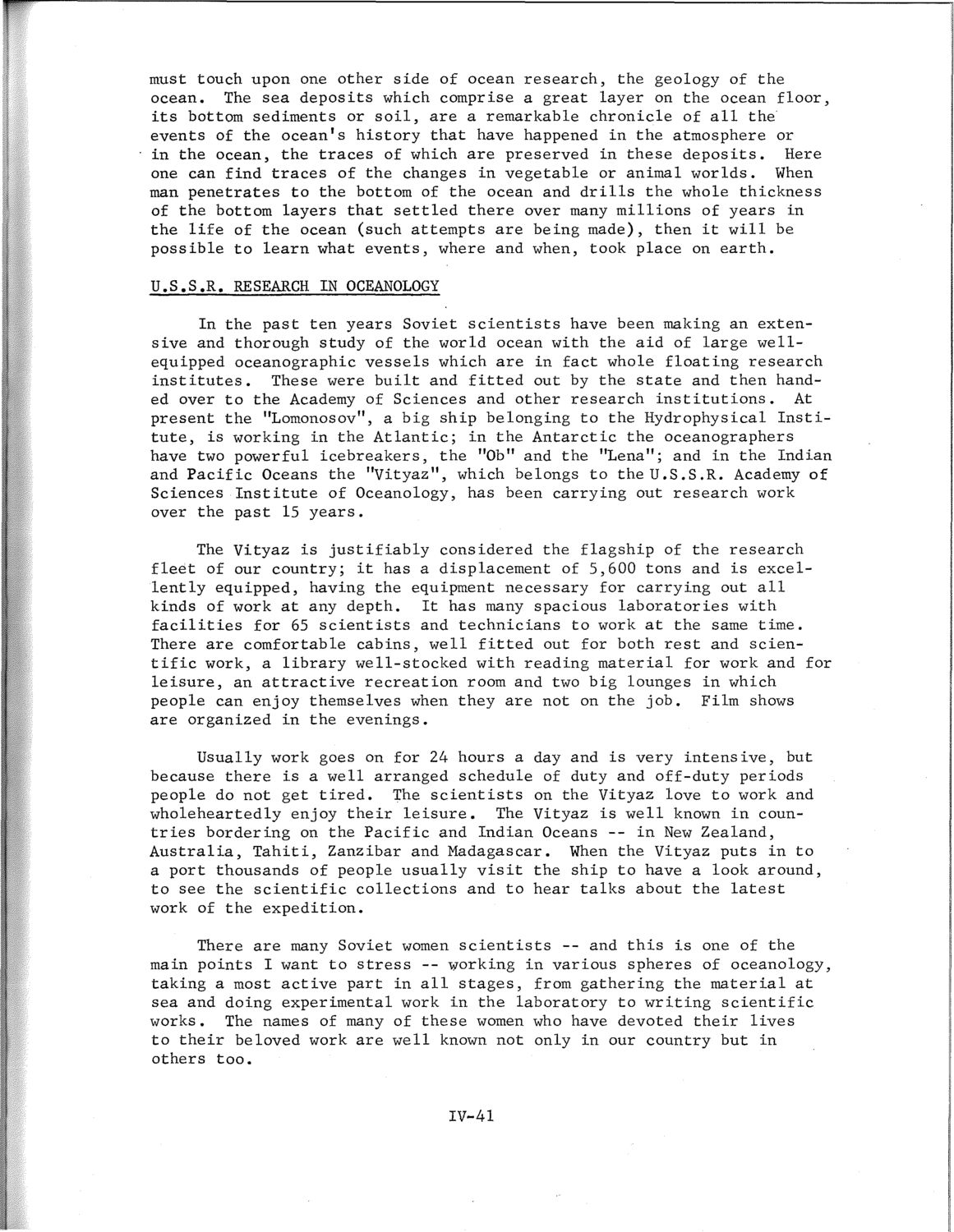| |
| |
Caption: SWE - Proceedings of the First International Conference of Women Engineers and Scientists
This is a reduced-resolution page image for fast online browsing.

EXTRACTED TEXT FROM PAGE:
must touch upon one other side of ocean research, the geology of the ocean. The sea deposits which comprise a great layer on the ocean floor, its bottom sediments or soil, are a remarkable chronicle of all the events of the ocean's history that have happened in the atmosphere or in the ocean, the traces of which are preserved in these deposits. Here one can find traces of the changes in vegetable or animal worlds. When man penetrates to the bottom of the ocean and drills the whole thickness of the bottom layers that settled there over many millions of years in the life of the ocean (such attempts are being made), then it will be possible to learn what events, where and when, took place on earth. U.S.S.R. RESEARCH IN OCEANOLOGY In the past ten years Soviet scientists have been making an extensive and thorough study of the world ocean with the aid of large wellequipped oceanographic vessels which are in fact whole floating research institutes. These were built and fitted out by the state and then handed over to the Academy of Sciences and other research institutions. At present the "Lomonosov", a big ship belonging to the Hydrophysical Institute, is working in the Atlantic; in the Antarctic the oceanographers have two powerful icebreakers, the "Ob" and the "Lena"; and in the Indian and Pacific Oceans the "Vityaz", which belongs to theU.S.S.R. Academy of Sciences Institute of Oceanology, has been carrying out research work over the past 15 years. The Vityaz is justifiably considered the flagship of the research fleet of our country; it has a displacement of 5,600 tons and is excellently equipped, having the equipment necessary for carrying out all kinds of work at any depth. It has many spacious laboratories with facilities for 65 scientists and technicians to work at the same time. There are comfortable cabins, well fitted out for both rest and scientific work, a library well-stocked with reading material for work and for leisure, an attractive recreation room and two big lounges in which people can enjoy themselves when they are not on the job. Film shows are organized in the evenings. Usually work goes on for 24 hours a day and is very intensive, but because there is a well arranged schedule of duty and off-duty periods people do not get tired. The scientists on the Vityaz love to work and wholeheartedly enjoy their leisure. The Vityaz is well known in countries bordering on the Pacific and Indian Oceans -- in New Zealand, Australia, Tahiti, Zanzibar and Madagascar. When the Vityaz puts in to a port thousands of people usually visit the ship to have a look around, to see the scientific collections and to hear talks about the latest work of the expedition. There are many Soviet women scientists -- and this is one of the main points I want to stress -- working in various spheres of oceanology, taking a most active part in all stages, from gathering the material at sea and doing experimental work in the laboratory to writing scientific works. The names of many of these women who have devoted their lives to their beloved work are well known not only in our country but in others too. IV-41
| |